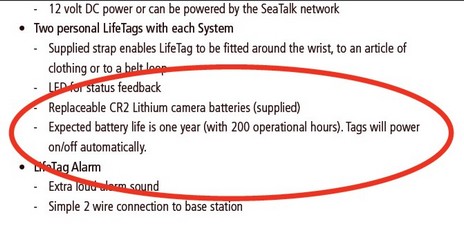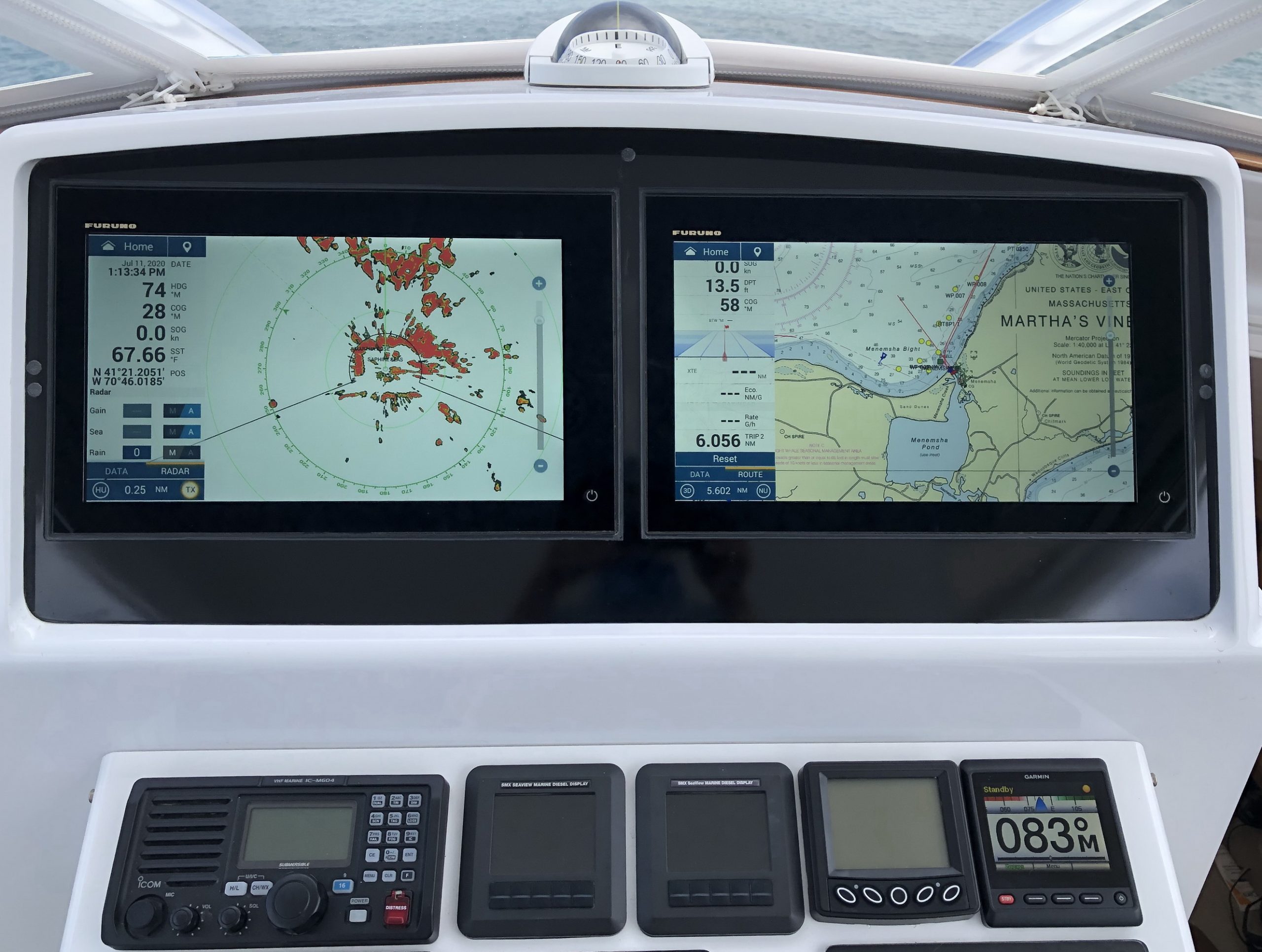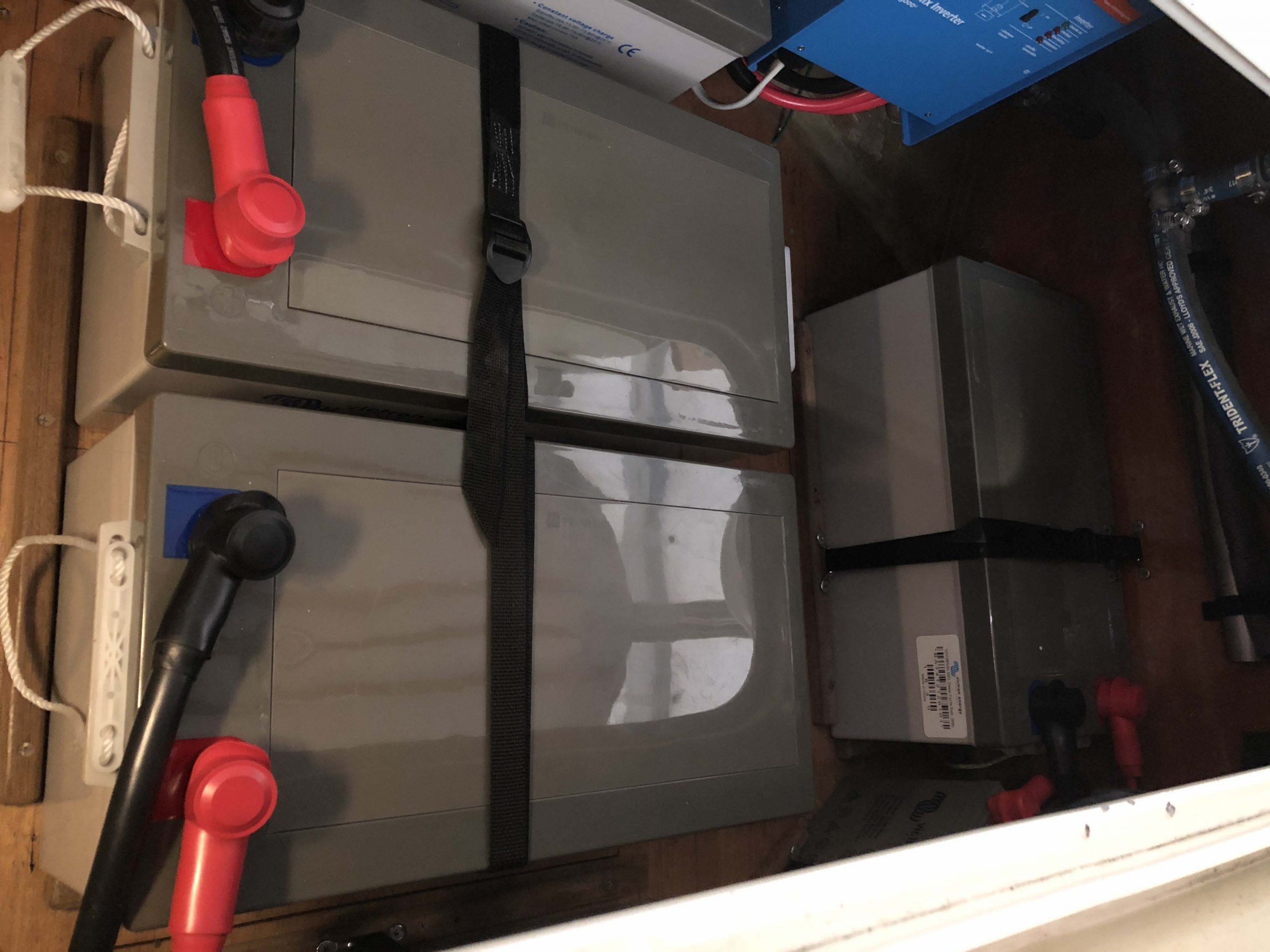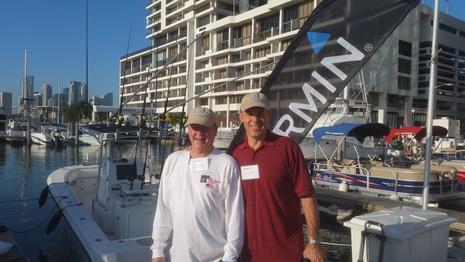More thoughts on LifeTag, a battery issue for some

Panbo reader and offshore sailor Jon pointed out a possible downside to the Raymarine LifeTag MOB system that I hadn’t really picked up on (edited for brevity): “Curiously, this battery information [seen in the brochure crop above] is lacking from the installation and operating guides—I would want to know this before heading offshore on a two week passage. The system does warn you when the batteries go low, but unless you planned for it you would be unlikely to have the odd sized battery on board. Also, there is mention of the tags powering up/down automatically, but the information seems to suggest that the tags will only power down by shutting down the whole system [true]. OK for a daysail, but with that kind of battery life you would like to power down the tags for the off watch crew for example. The MOBi-lert system has a connected charging pod, when the tags are inserted in the pod the system recognizes where they are and puts them to sleep. On that system each tag is tracked individually, so you can check the status of each: #1 is charging, #2 is active, #3 has a low battery, #4 is overboard and so forth.”
“For my use, this extra sophistication is nice, however I would trade it for the integration of the LifeTag, but for the battery life issue. The Raymarine and MOBi-lert are what I call “active” systems, i.e., they actively poll the tag. Sea Marshall, Alert2, and the Mermaid ID are what I call “passive” systems in that the receiver is always listening, but the transmitter is only set off by a tag in the water. This latter system is inherently less reliable, because a fault such as a bad transmitter or low battery will only be discovered at the next watch change when the MOB is 4 hours away in the wake. On the other hand, battery life of the tags can be years. The “active” system while more reliable, probably leads to many more false alarms due to low battery or slightly out of range etc., but that is the right tradeoff for this sort of equipment. However since it is always being polled, battery life is going to be a problem. I just think Raymarine’s solution to the problem is bad, and will lead to not using it offshore, when you need it most. Inductive chargers [like MOBi-lert’s] are used in the cheapest of consumer equipment, like electric toothbrushes and shavers, this stuff is easy to do and cheap. And it would allow the case to be sealed: I wonder if Raymarine warrantees the tags for water ingress, after they have been opened 43 times (1 year’s worst case use)?” (Thanks, Jon!)
I’ve cracked open the case on the LifeTag and, while it is only a snap fit, I think a little care changing batteries and maybe a little silicone grease will keep them alive. That said, I don’t think LifeTag is really aimed at round-the-world sailors, nor is it priced like the systems that are. And, by the way, I first used “active” and “passive” to differentiate the two styles of MOB alarms, but then someone said that’s confusing because a truly active system would let you home in on the victim. Now I’m thinking that “proactive” and “reactive” are much better terms. I read them in a good article about the Mermaid id from Yachting World. Mermaid, by the way, is not the first to think of using sonar to communicate between MOB and yacht; the Swiss company Deep Blue has at least advertised the idea already.













If the LifeTag’s only power down when the system is powered down, then 200hrs of life is pretty much useless. I suppose you could put a switch on the LifeTag base station (assuming that turning off the base station would trigger the tags to turn off) and remember to turn it on/off as needed.
This kind of product is about offshore passages. 200 hrs is about 8 days, a moderate passage length for most of us. Sounds like a fresh set of batteries for every passage to be sure they’re up to speed; a couple of sets for a longer passage like a Transatlantic or Transpac. Nobody wants to deal with the battery dying in the middle of the night, alarming the off watch and creating chaos like an errant smoke alarm at home.
The snap fit case also doesn’t sound like it is offshore ready either. Are there any gaskets or rings?
I’m trying to buy only Lithium Ion recharable products, anything else is either unreliable or a hassle. Come on Raymarine, get with the program!
Since the lifetags communicate by radio waves, you should be able to put them into standby mode by putting them into a faraday cage — such as a biscuit tin.
Personally, I’m sticking to the keep-everyone-on-board mentality on offshore trips.